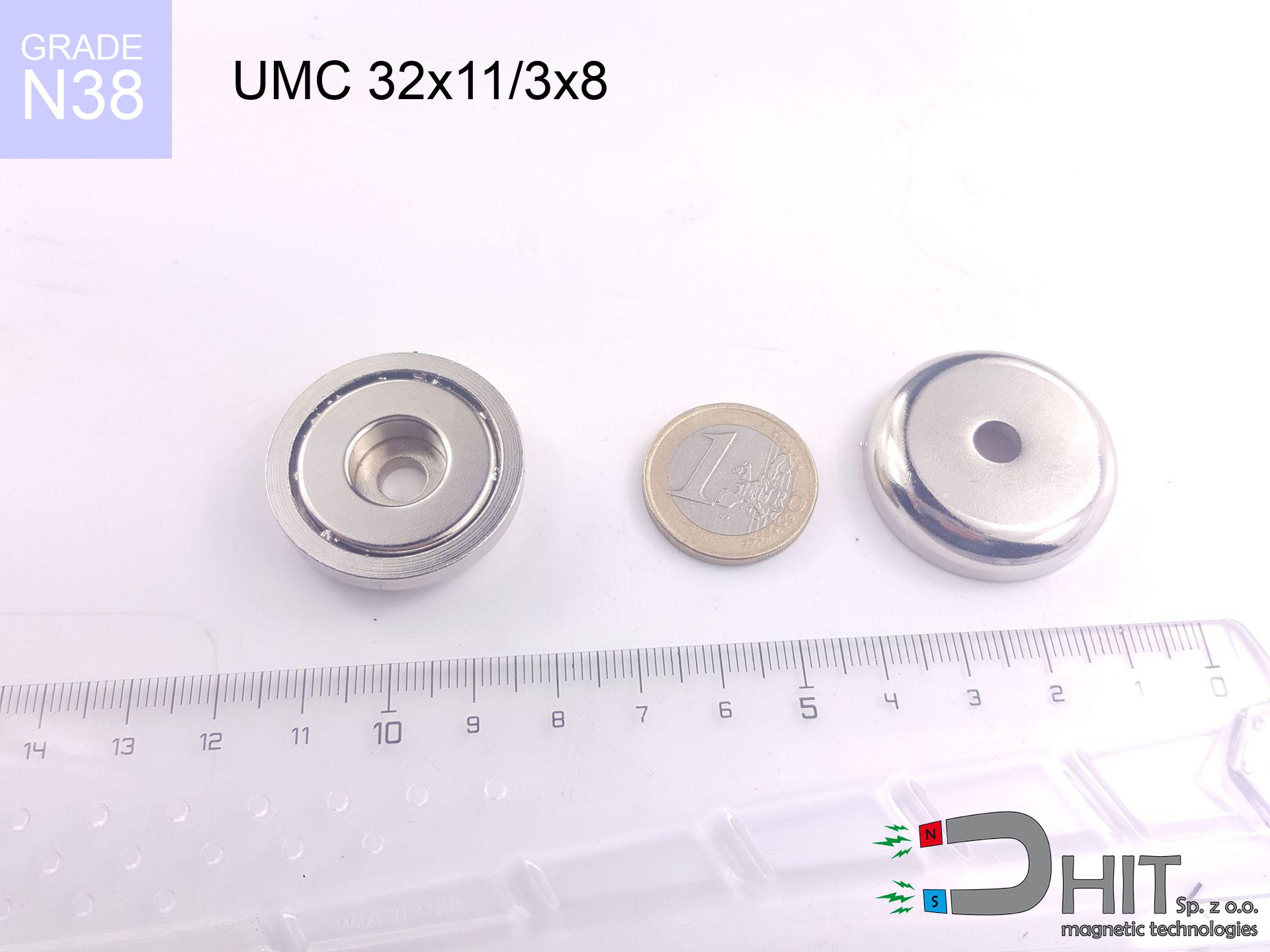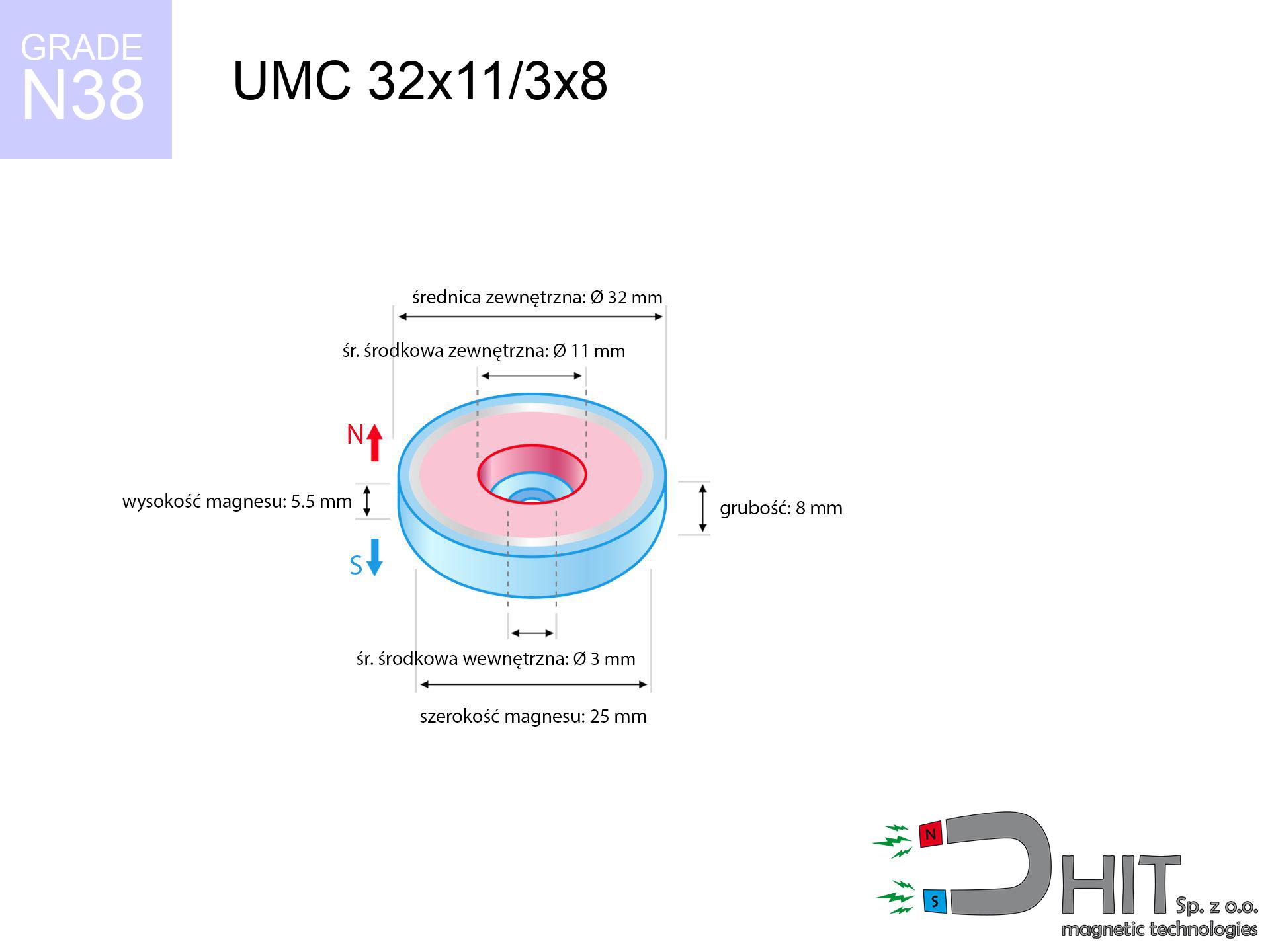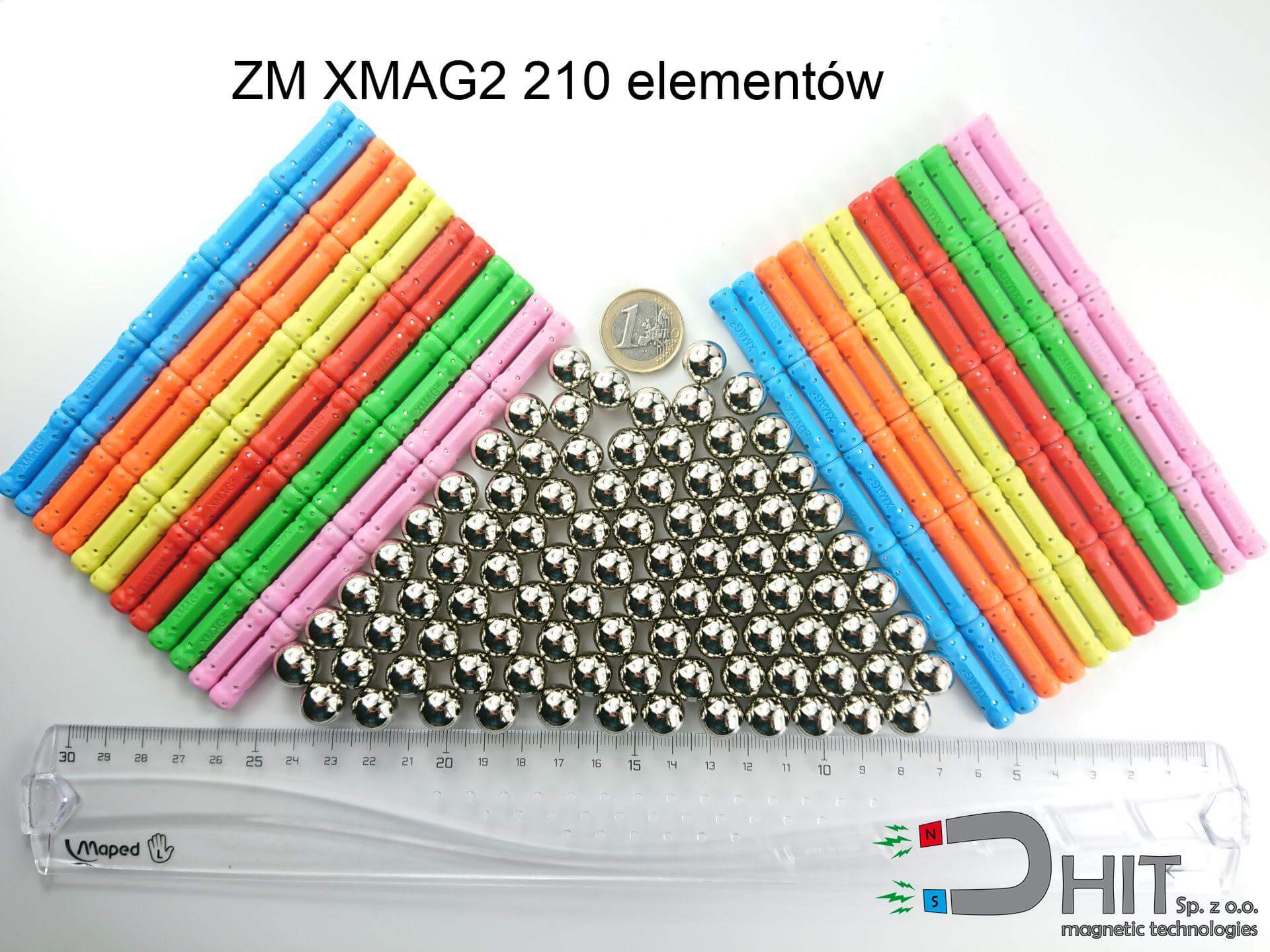UMC 32x11/3x8 / N38
cylindrical magnetic holder
catalog number 320409
GTIN: 5906301814658
external diameter Ø
32
mm [±0,1 mm]
internal diameter Ø
11/3
mm [±0,1 mm]
height
8
mm [±0,1 mm]
capacity ~
23.00 kg / 225.55 N
max. temperature
≤ 80
°C
catalog number 320409
GTIN: 5906301814658
external diameter Ø
32 mm [±0,1 mm]
internal diameter Ø
11/3 mm [±0,1 mm]
height
8 mm [±0,1 mm]
capacity ~
23.00 kg / 225.55 N
max. temperature
≤ 80 °C
17.98 ZŁ gross price (including VAT) / pcs +
14.62 ZŁ net price + 23% VAT / pcs
bulk discounts:
need more quantity?Don't know what to choose?
Give us a call tel: +48 22 499 98 98 or write through form on our website. You can check the strength and the appearance of neodymium magnets in our magnetic calculator magnetic mass calculator
Orders placed by 2:00 PM will be shipped on the same business day.
Specification: cylindrical magnetic holder 32x11/3x8 / N38
Magnetic properties of the material N38
Physical properties of sintered neodymium magnets Nd2Fe14B
Choose recommended products
Advantages as well as disadvantages of neodymium magnets NdFeB.
Apart from immense power, neodymium magnets have the following advantages:
- They do not lose strength over time - after approximately 10 years, their strength decreases by only ~1% (theoretically),
- They protect against demagnetization caused by external magnetic field extremely well,
- By applying a shiny coating of nickel, gold, or silver, the element gains an aesthetic appearance,
- They exhibit extremely high magnetic induction on the surface of the magnet,
- Thanks to their high temperature resistance, they can operate (depending on the form) even at temperatures up to 230°C and above...
- The ability for precise shaping and customization to specific needs – neodymium magnets can be produced in a wide range of shapes and sizes, which enhances their versatility in applications.
- Significant importance in advanced technologically fields – find application in HDD drives, electric drive mechanisms, medical apparatus or various technologically advanced devices.
Disadvantages of neodymium magnets:
- They can break as they are extremely fragile when subjected to a powerful impact. If the magnets are exposed to impacts, we recommend using magnets in a steel housing. The steel housing in the form of a holder protects the magnet from impacts and also increases its overall strength,
- They lose power at high temperatures. Most neodymium magnets experience permanent loss of strength when heated above 80°C (depending on the shape and height). However, we also offer special magnets with high temperature resistance, up to 230°C,
- They rust in a humid environment - during outdoor use, we recommend using waterproof magnets, such as those made of rubber or plastic,
- Limited ability to create threads or complex shapes in the magnet - the use of a housing is recommended - magnetic holder
- Potential hazard associated with microscopic parts of magnets pose a threat, when accidentally ingested, which is particularly important in the aspect of protecting young children. It's also worth noting that miniscule components of these products are able to hinder the diagnostic process in case of swallowing.
Exercise Caution with Neodymium Magnets
Neodymium magnets are known for their fragility, which can cause them to crumble.
Neodymium magnets are characterized by significant fragility. Neodymium magnets are made of metal and coated with a shiny nickel surface, but they are not as hard as steel. In the event of a collision between two magnets, there may be a scattering of fragments in different directions. Protecting your eyes is crucial in such a situation.
Never bring neodymium magnets close to a phone and GPS.
Neodymium magnets produce strong magnetic fields that interfere with magnetometers and compasses used in navigation, as well as internal compasses of smartphones and GPS devices.
Neodymium magnets are among the strongest magnets on Earth. The astonishing force they generate between each other can surprise you.
Familiarize yourself with our information to correctly handle these magnets and avoid significant swellings to your body and prevent disruption to the magnets.
Do not give neodymium magnets to youngest children.
Remember that neodymium magnets are not toys. Be cautious and make sure no child plays with them. They can be a significant choking hazard. If multiple magnets are swallowed, they can attract to each other through the intestinal walls, causing significant injuries, and even death.
People with pacemakers are advised to avoid neodymium magnets.
In the case of neodymium magnets, there is a strong magnetic field. As a result, it interferes with the operation of a heart pacemaker. Even if the magnetic field does not affect the device, it can damage its components or deactivate the entire device.
Under no circumstances should neodymium magnets be placed near a computer HDD, TV, and wallet.
Strong magnetic fields emitted by neodymium magnets can destroy magnetic storage media such as floppy disks, credit cards, magnetic ID cards, cassette tapes, video tapes, or other devices. They can also damage televisions, VCRs, computer monitors, and CRT displays. You should especially avoid placing neodymium magnets near electronic devices.
Magnets will attract to each other, so remember not to allow them to pinch together without control or place your fingers in their path.
Neodymium magnets bounce and also touch each other mutually within a radius of several to almost 10 cm from each other.
Neodymium magnets can become demagnetized at high temperatures.
In certain circumstances, Neodymium magnets can lose their magnetism when subjected to high temperatures.
The magnet coating contains nickel, so be cautious if you have a nickel allergy.
Studies show a small percentage of people have allergies to certain metals, including nickel. An allergic reaction often manifests as skin redness and rash. If you have a nickel allergy, try wearing gloves or avoid direct contact with nickel-plated neodymium magnets.
Dust and powder from neodymium magnets are flammable.
Do not attempt to drill into neodymium magnets. Mechanical processing is also not recommended. If the magnet is crushed into fine powder or dust, it becomes highly flammable.
To raise awareness of why neodymium magnets are so dangerous, read the article titled How dangerous are very strong neodymium magnets?.




![through hole magnetic holder 42x8.8 [M6] / N38 ↑ axial through hole magnetic holder 42x8.8 [M6] / N38 ↑ axial](https://cdn3.dhit.pl/graphics/products/hh-42x8.8-m6-hin.jpg)



